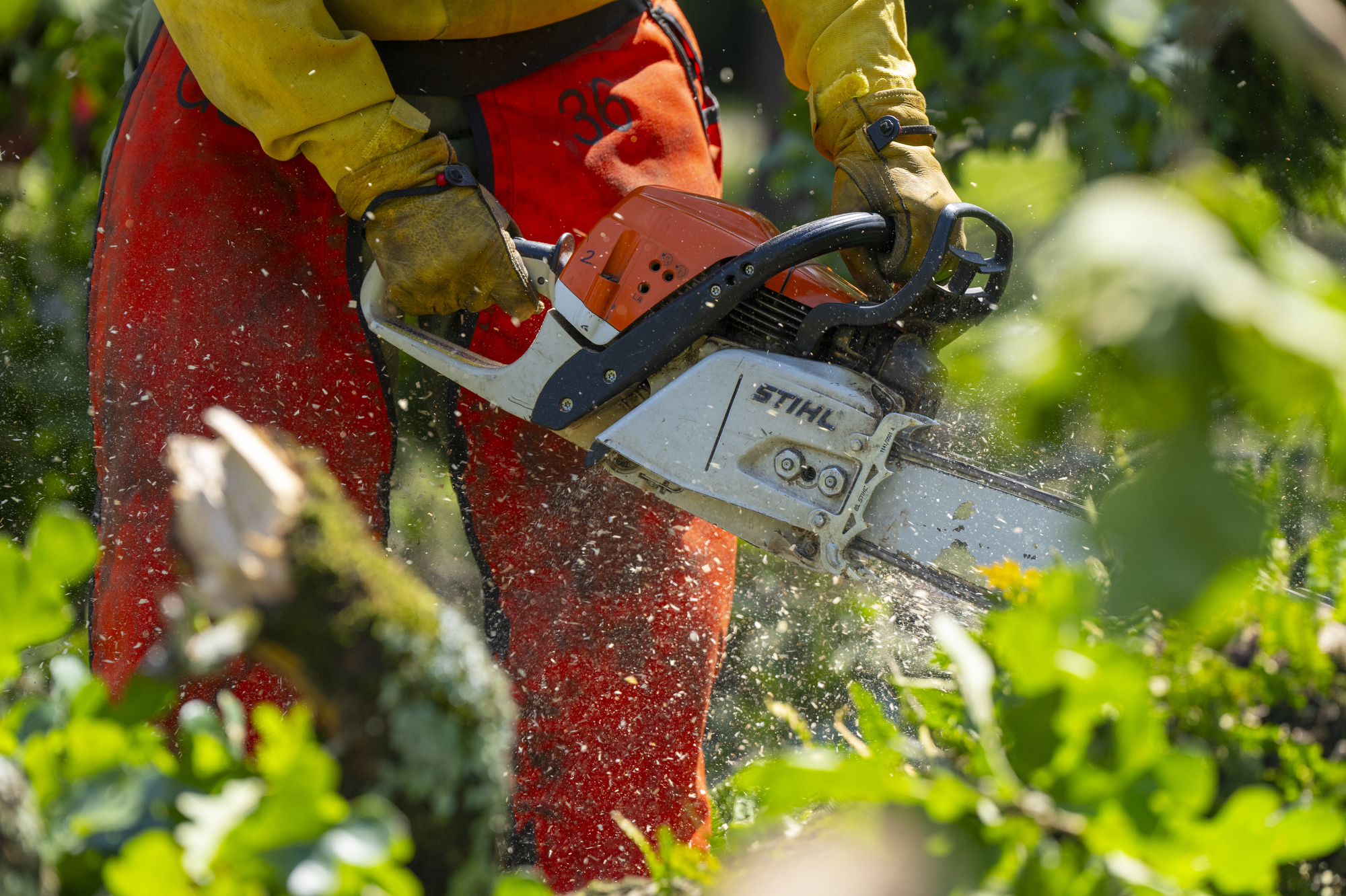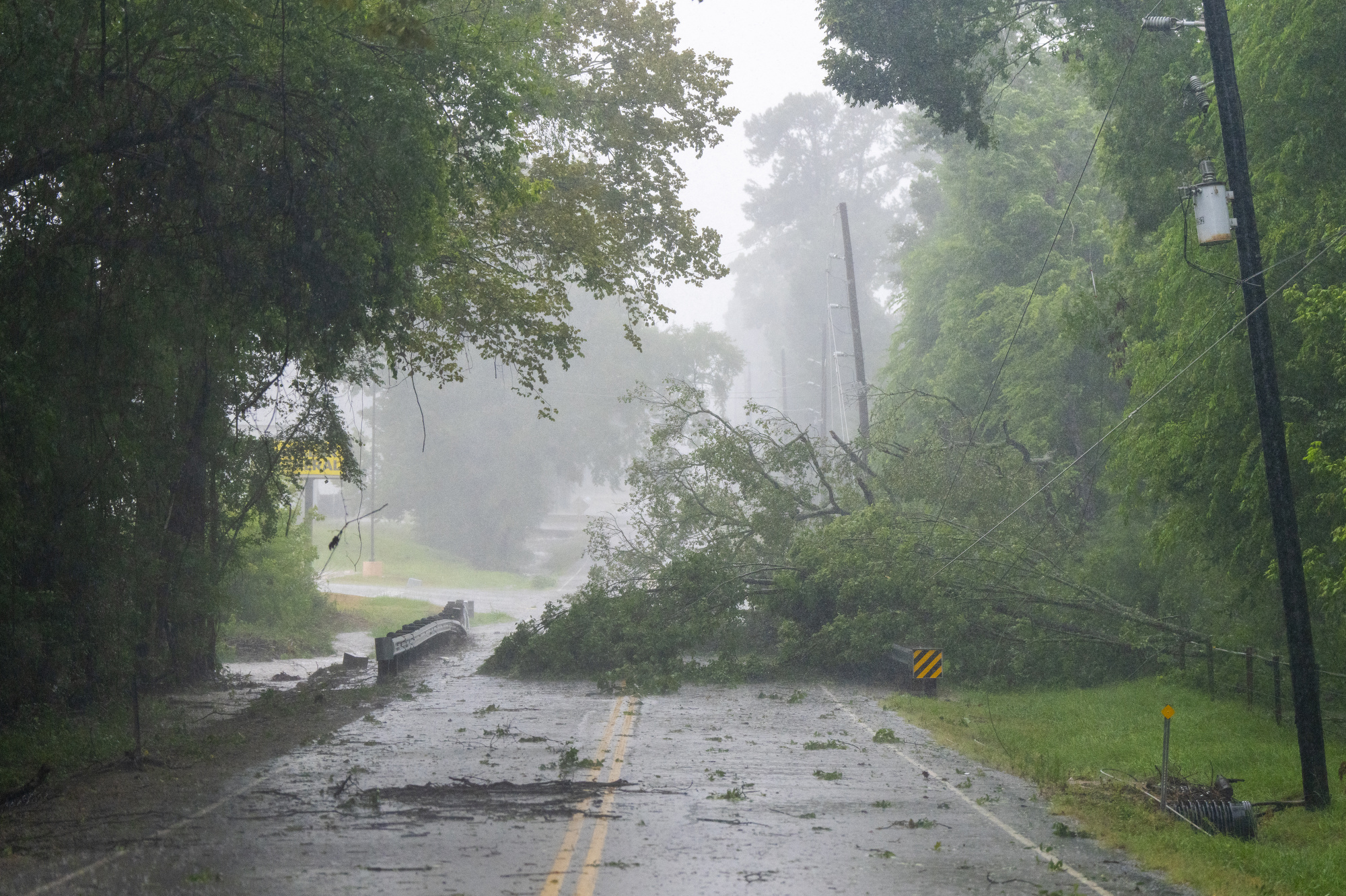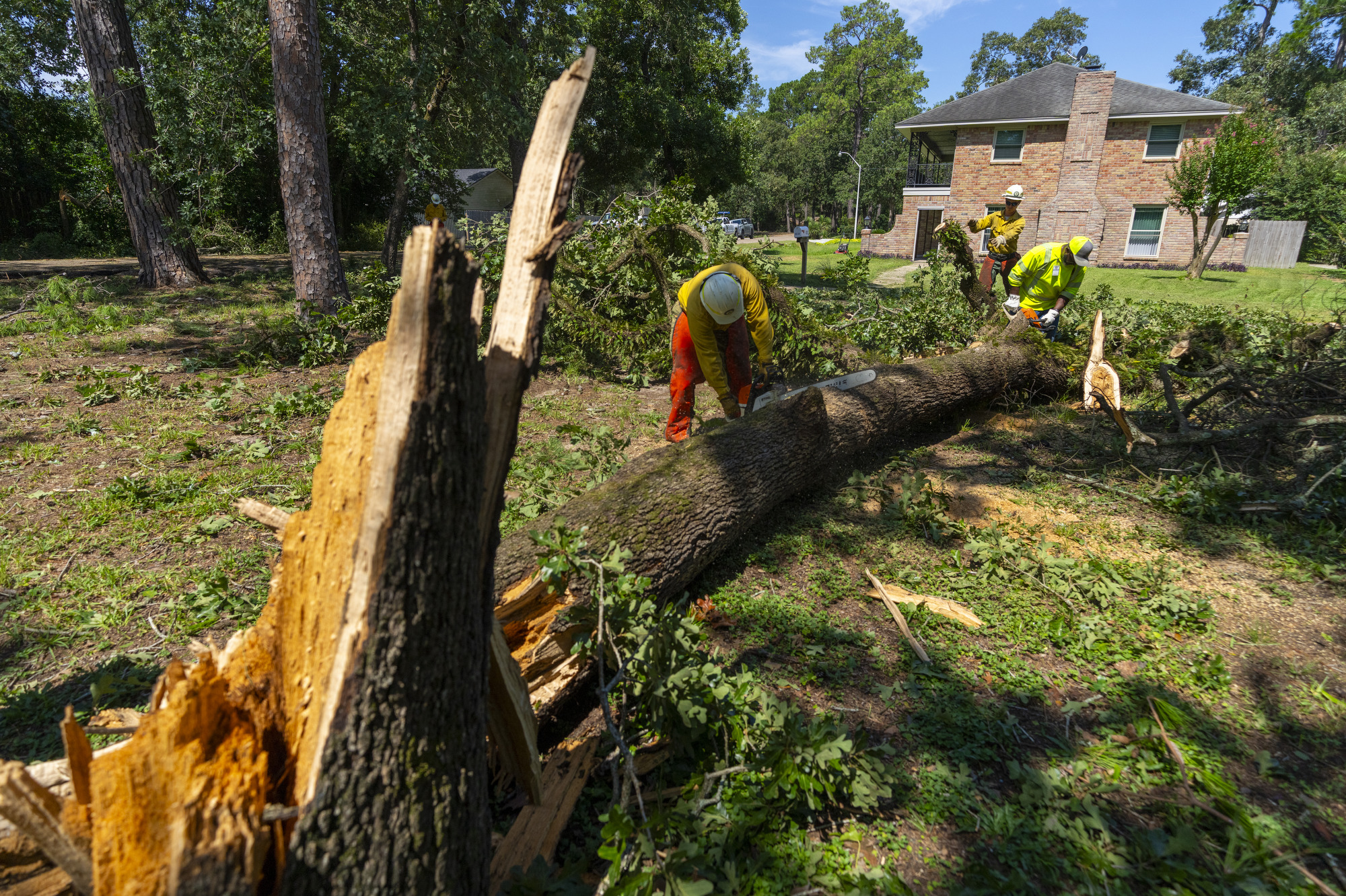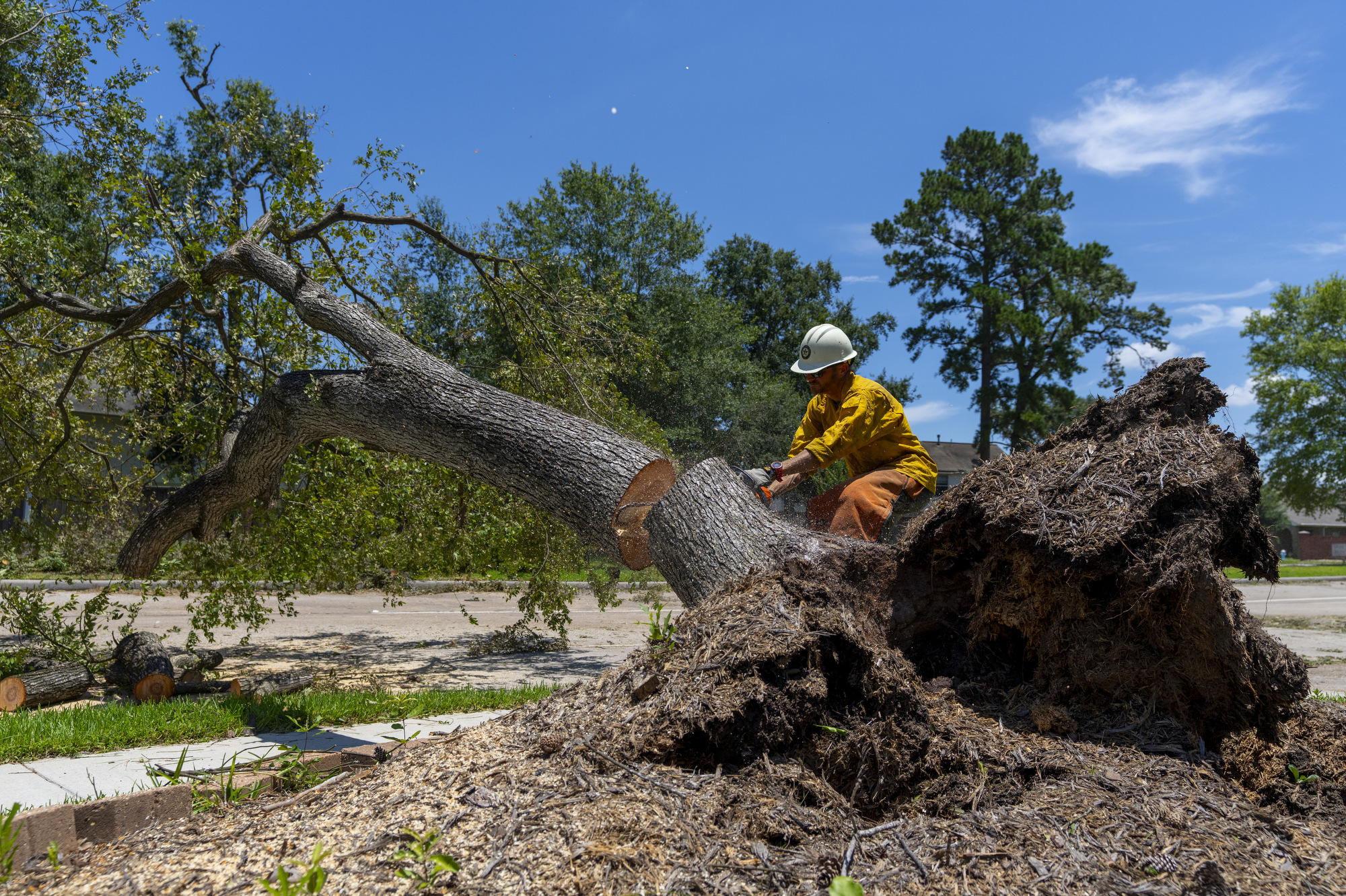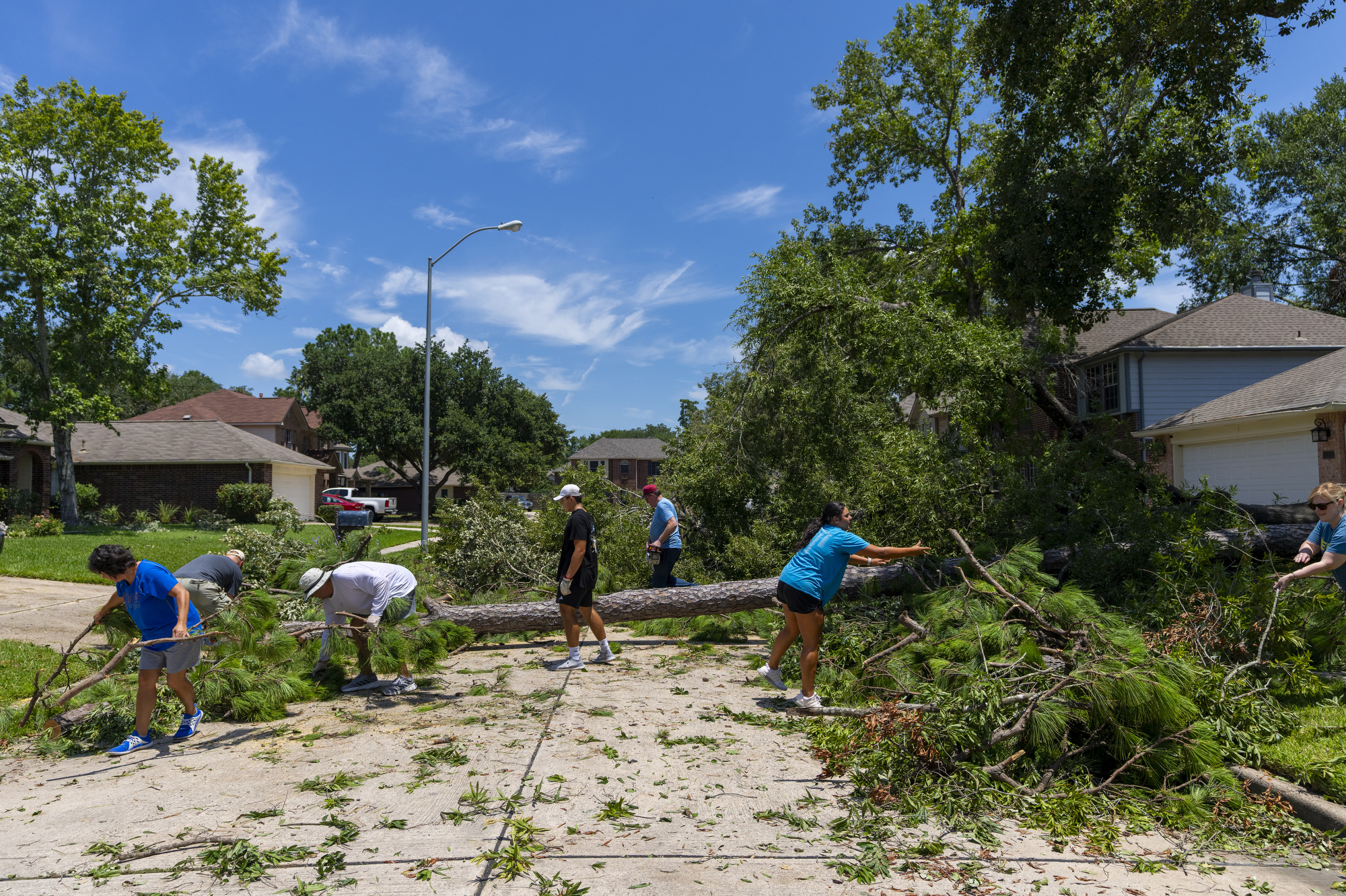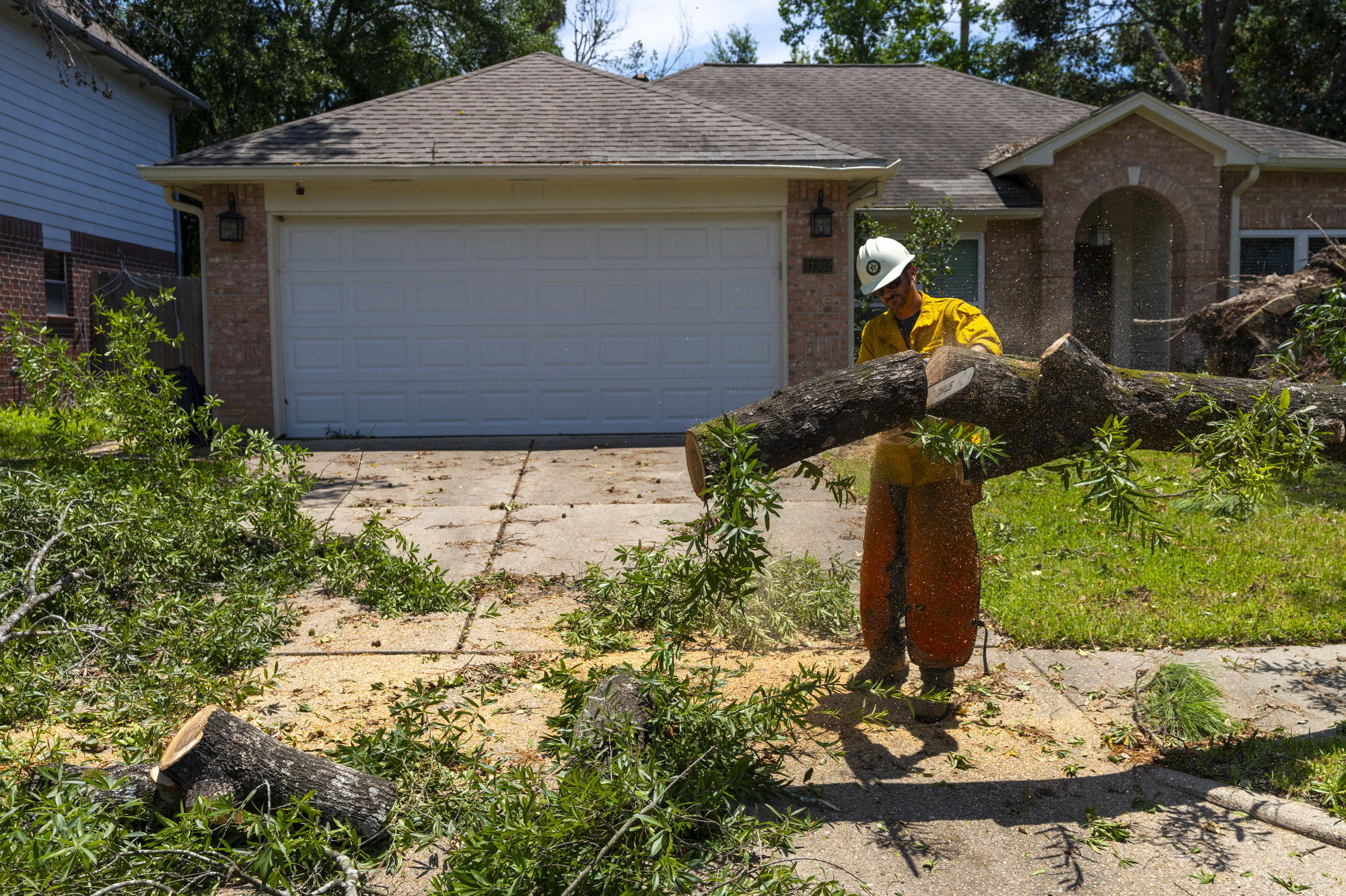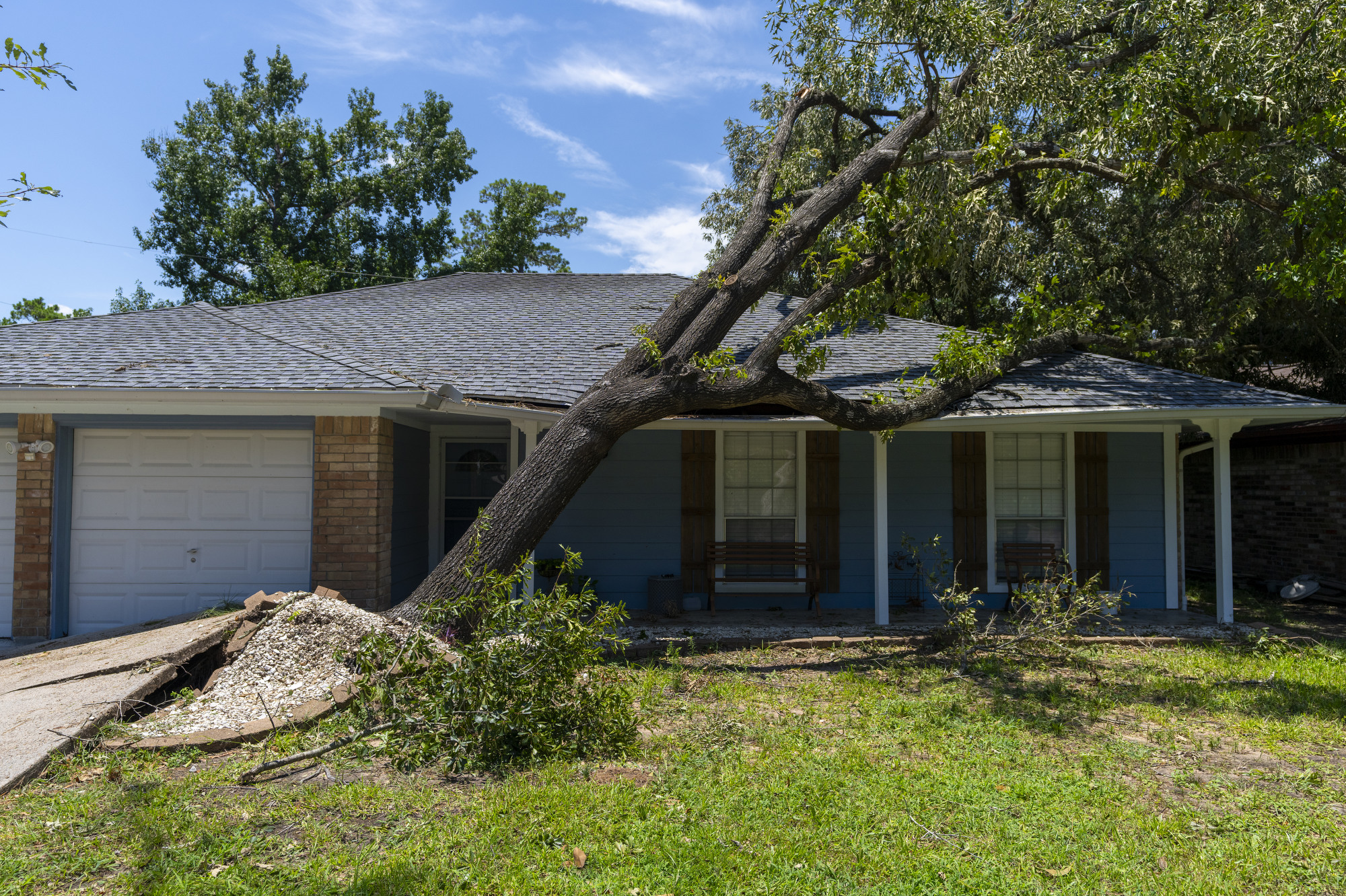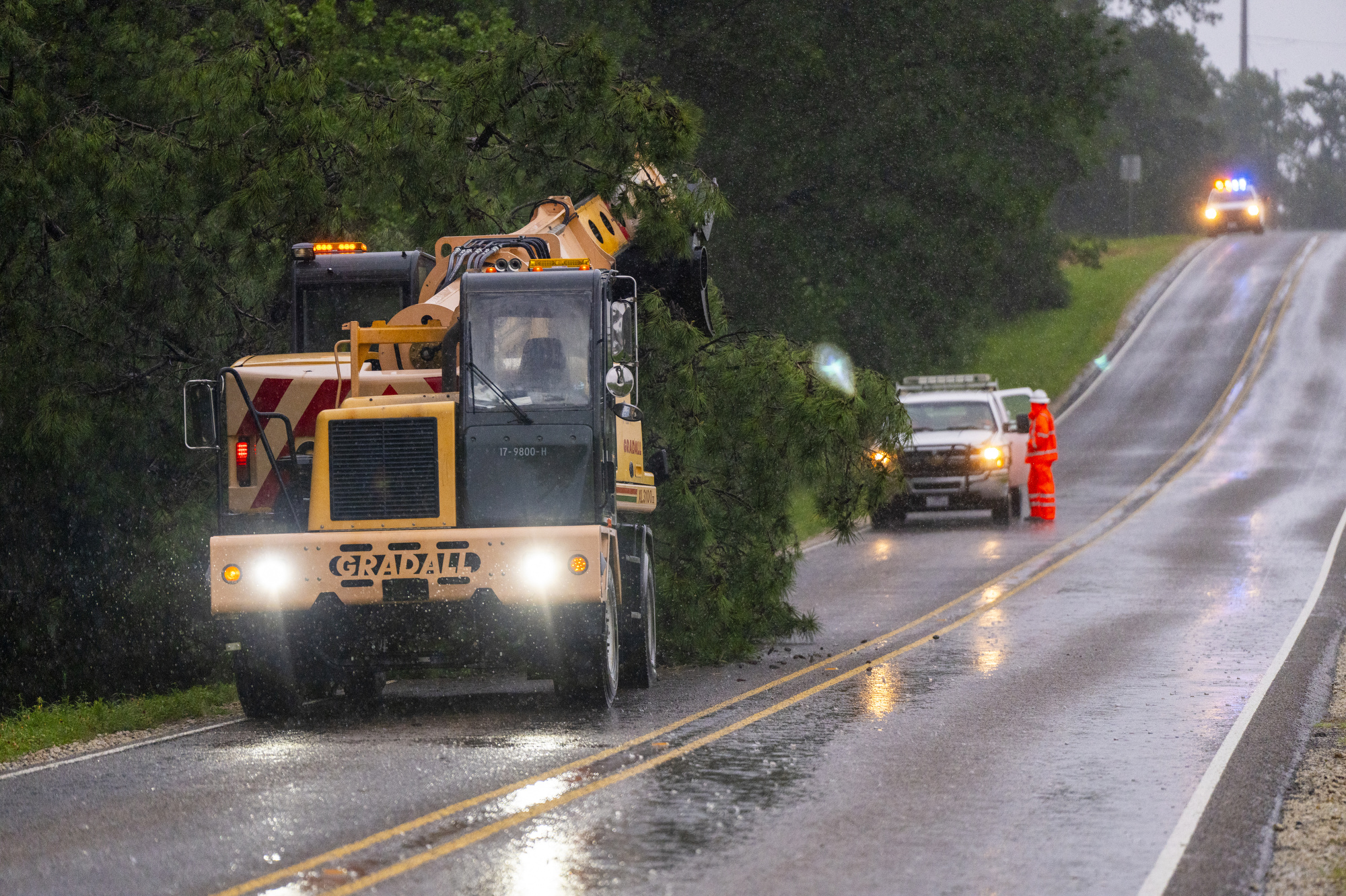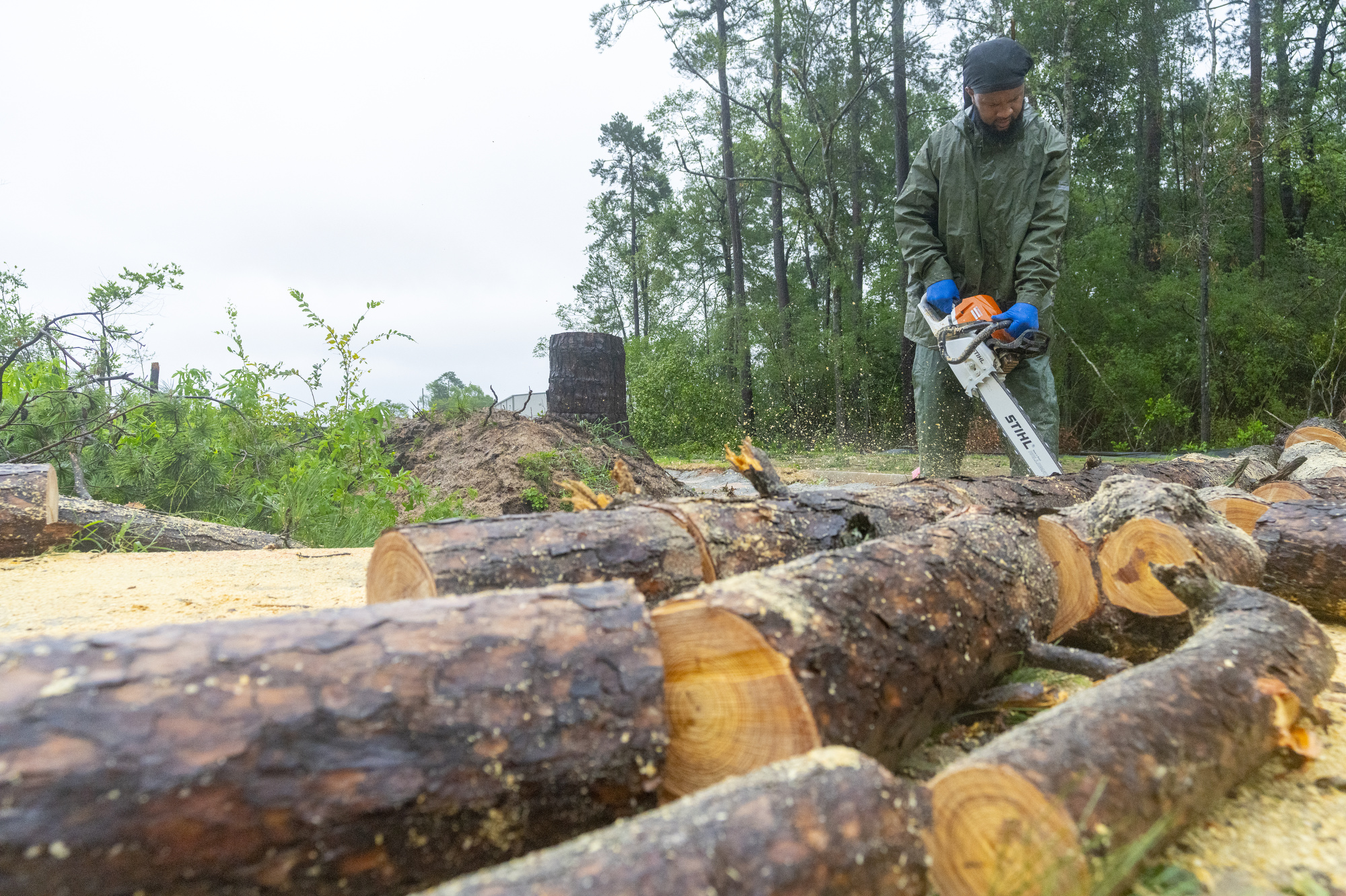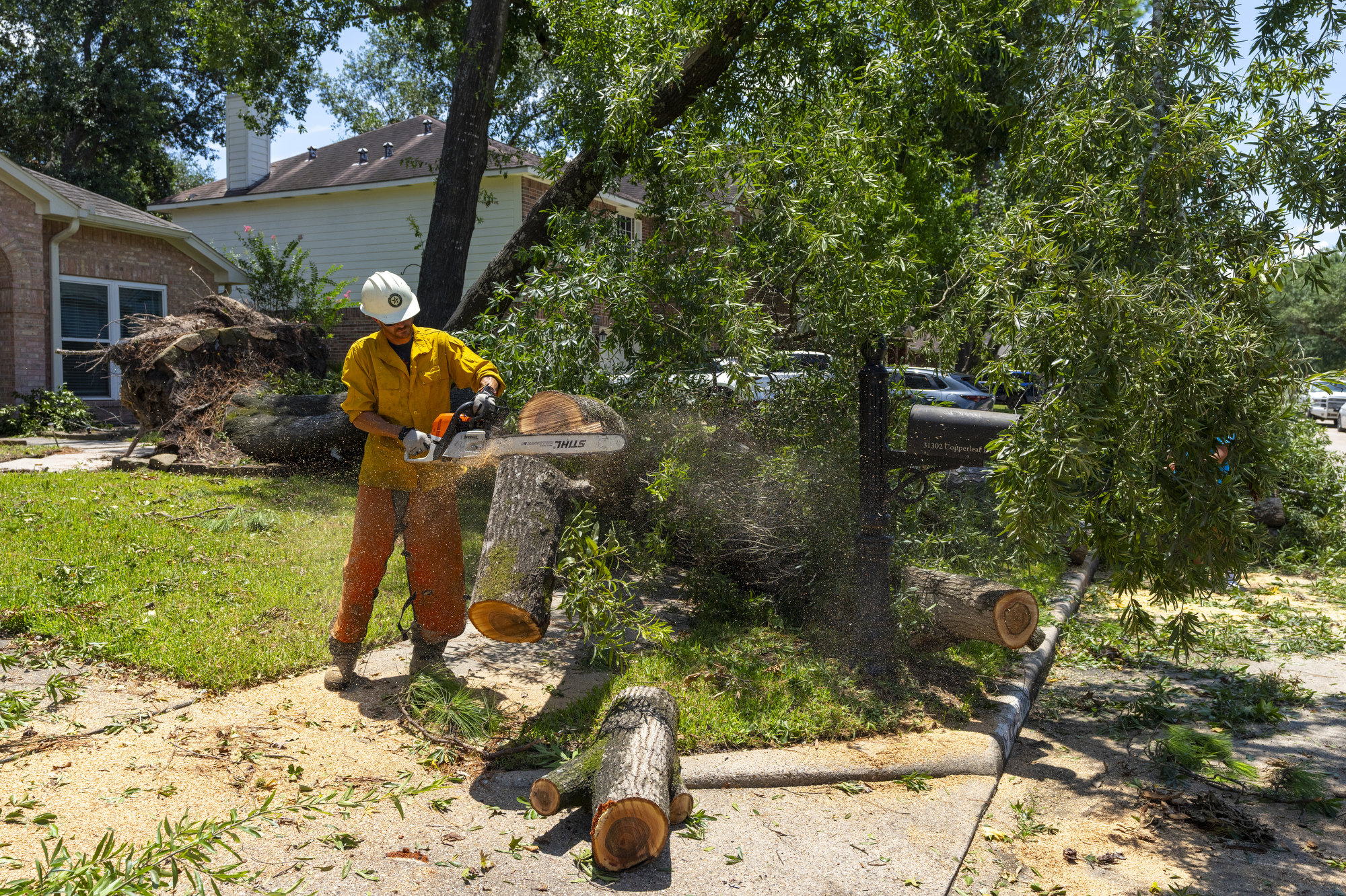Texas A&M AgriLife aids in Hurricane Beryl recovery
Agricultural damage assessments and debris removal provided for communities in affected areas

Debris from trees littered the road. Branches, trunk shards and sometimes entire trees, roots and all, created hazards for drivers and caused damage to nearby structures and infrastructure.
Sawdust floated to the ground like allergy-laden snowflakes amid the fallen trees as Texas A&M Forest Service workers used chainsaws to cut trees into manageable sections and clear roads across Montgomery County.
The cause was Hurricane Beryl, which made final landfall as a Category 1 hurricane July 8 in Matagorda and was later downgraded to a tropical storm as it moved up into East Texas, leaving behind a path of debris. Besides the downed trees, Hurricane Beryl’s storm damage also included downed power lines, major flooding, long gas lines and crop injury. At its peak, nearly 3 million homes and businesses in the Houston area were without power.
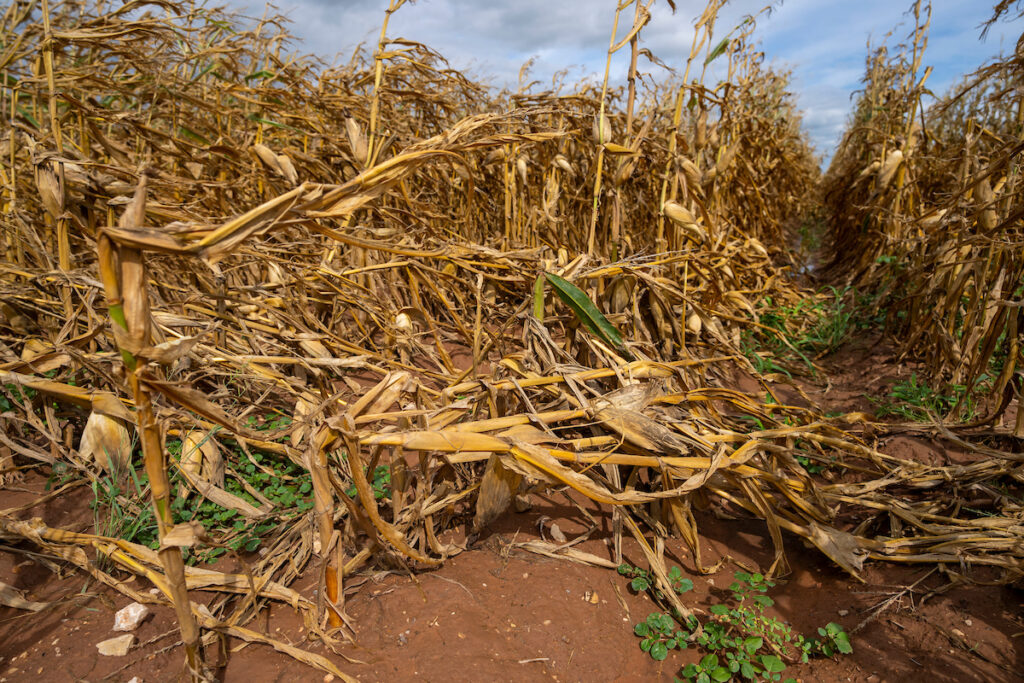

Helping Texans recover
The Texas A&M AgriLife Extension Service Disaster Assessment and Recovery, DAR, unit responded as the storm moved through the state to support residents and agricultural producers. DAR agents are conducting agricultural damage assessments on farms and ranches, including crops, livestock and infrastructure, in affected counties.
The Texas A&M Forest Service and DAR unit work in partnership with the Texas Division of Emergency Management, part of The Texas A&M University System. DAR is part of The Texas A&M University System’s Keeping Texas Prepared initiative.
